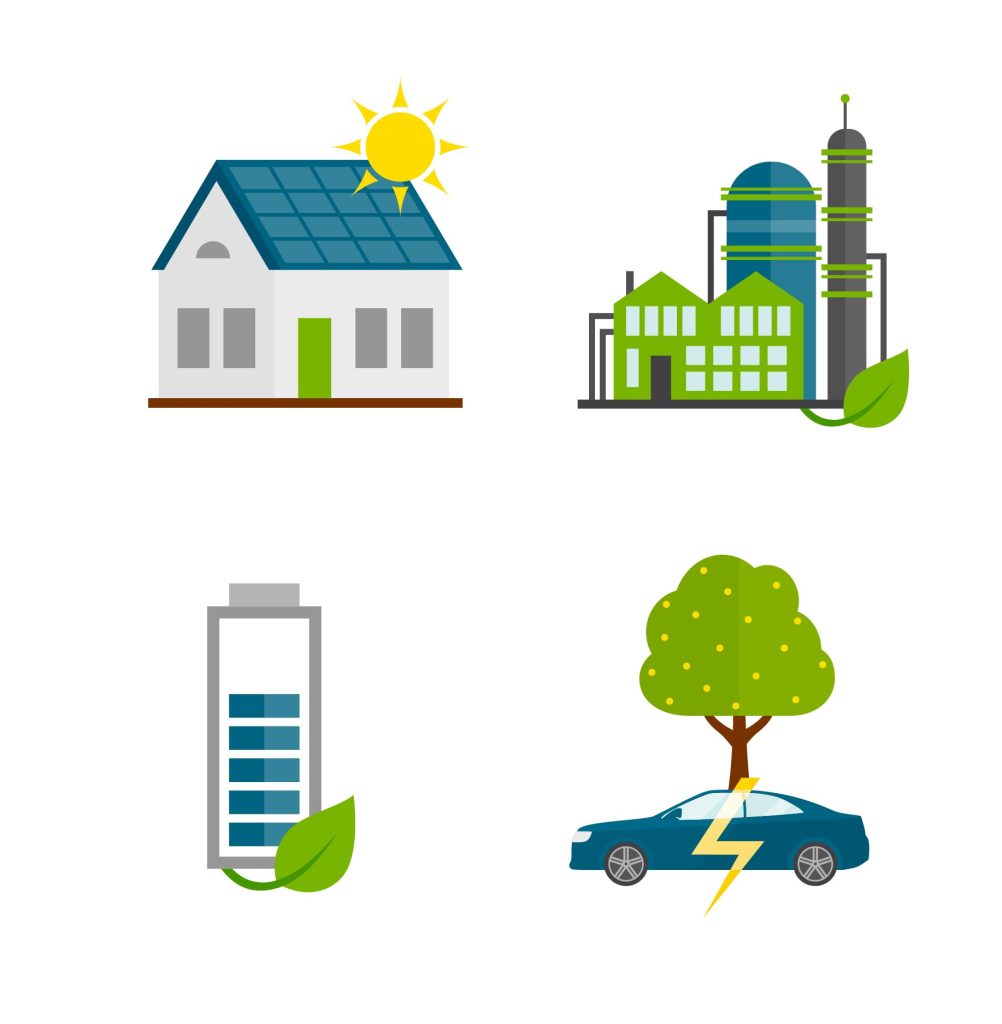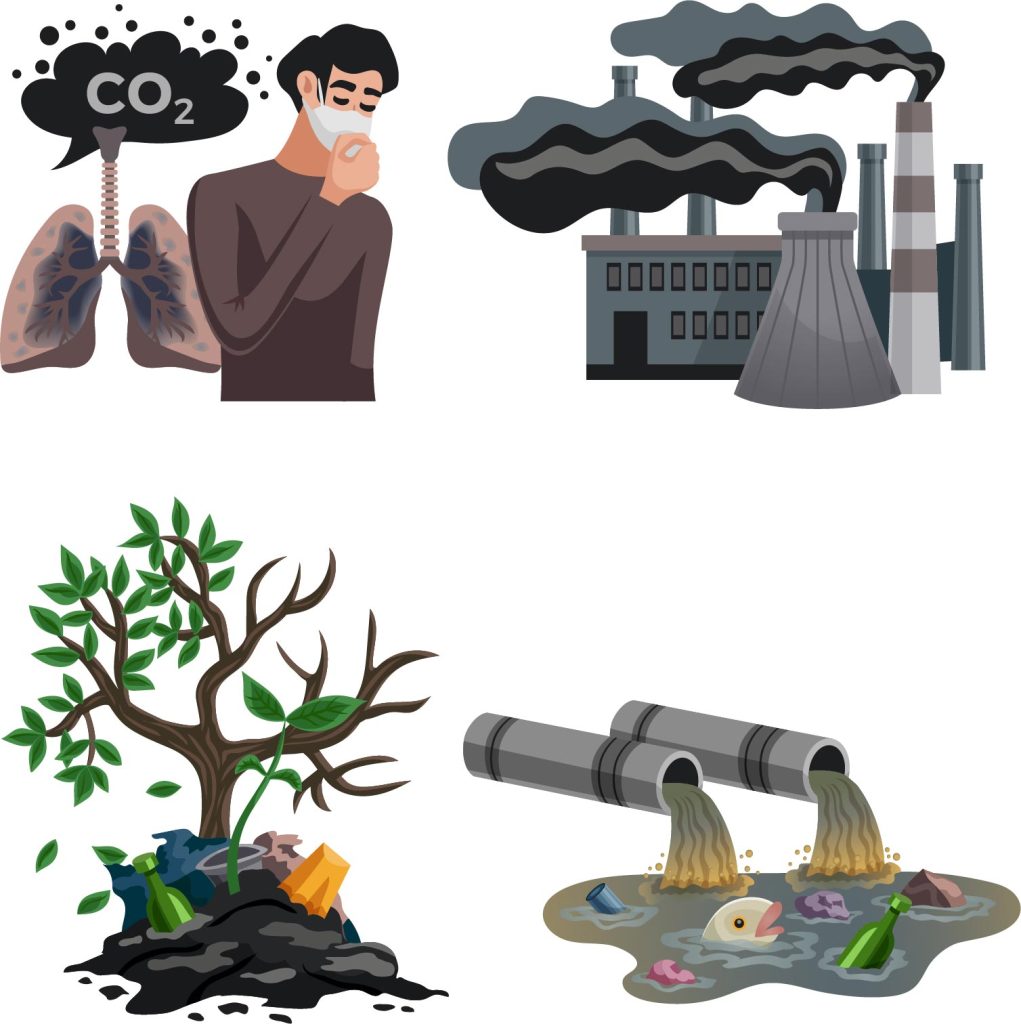To start our ‘Big Idea’ section, let’s first identify the differences between renewable and non-renewable energy sources. Click the tabs below to read about renewable and non-renewable energy and the impacts of each source.
Renewable sources like wind, hydropower, geothermal, and solar offer sustainable sources of energy because they do not generate any type of greenhouse gas emissions or pollutants.
Additionally, these types of energy sources are readily available and continually replenished – meaning we’ll never run out!
Renewable energy sources can power our homes, cities, and electric vehicles and help make us less reliant on nonrenewable sources.

Non-renewable sources like oil, natural gas, coal, and nuclear energy can have a severe negative impact on our environment.
These negative impacts include air pollution, hazardous waste, water pollution, and many more!
These negative impacts are often permanent and hard to reverse. This means that the longer we reply on nonrenewable energy, the worse these impacts will become for our environment.

[wpgenially] 64b011fec2758000129c7d27 [/wpgenially]